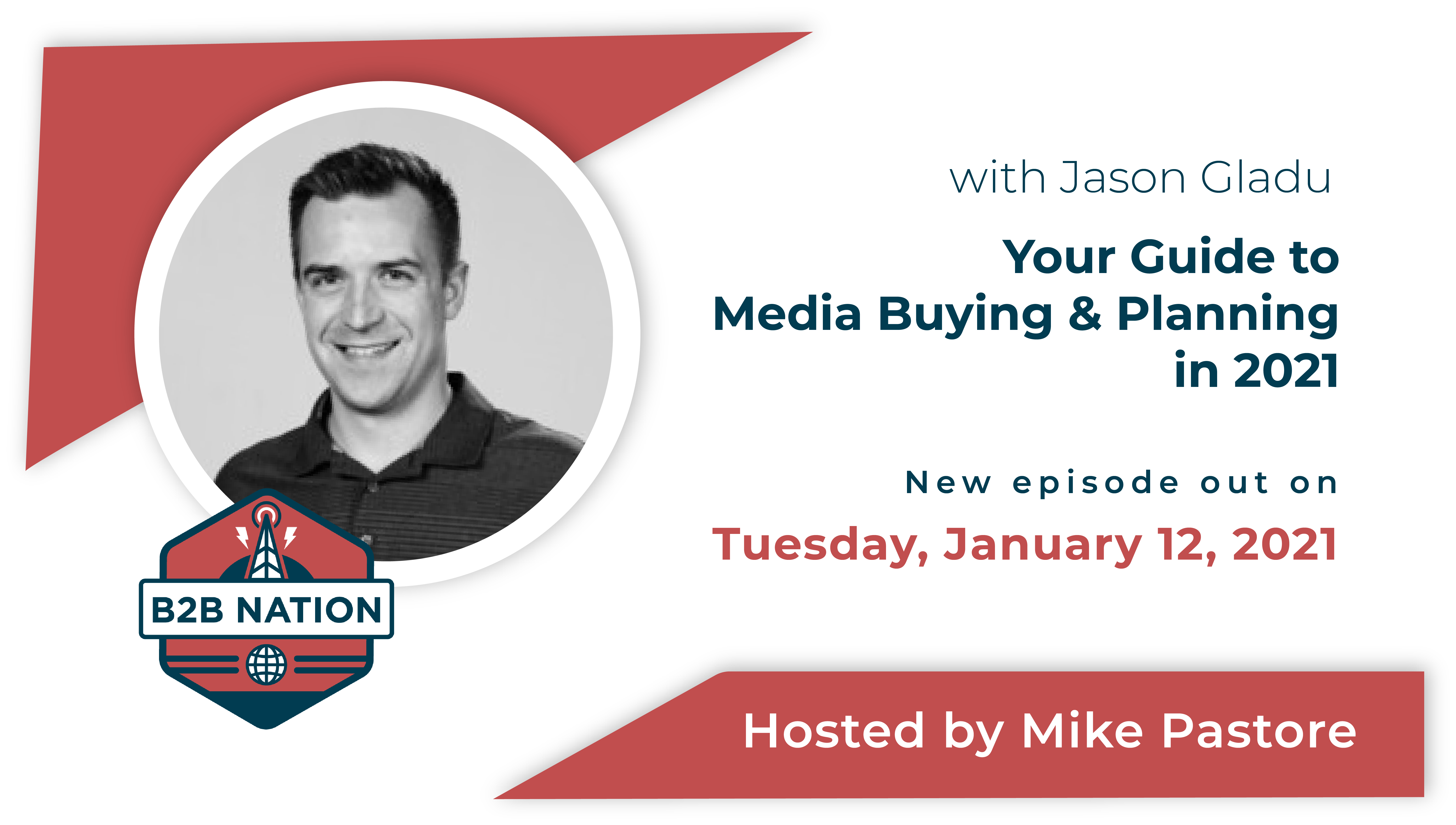Media buying is almost as old as marketing itself and it’s undergone similar changes to the larger marketing landscape in recent years.
There is, of course, the infusion of data into media buying. We collect it and analyze it in hopes that it will help us find our very niche audiences, which often consist of a very specific person who is part of a group of people deciding whether to make an investment.
Programmatic buying has also changed media buying, making it easier to quickly launch campaigns that touch a large audience. But programmatic has its drawbacks, which brings some marketers back to direct buys. Those direct buys might perform better than programmatic, but they also require more research and negotiation than programmatic buys.
RELATED EPISODE: HOW TO IMPROVE THE B2B AND B2C JOURNEY IN A DIGITAL WORLD
Other changes impacting media buying include media consumption itself, which has changed significantly in the past 10 to 20 years. Or has it? After all, newsletters and podcasts — neither of which is new — are the current darlings of online media. And there’s the year 2020, which was defined by changes that may or may not stick now that we’re in a new year.
We recorded this episode of B2B Nation at DemandFest, a half-day virtual event hosted by TechnologyAdvice. To discuss the state of media buying, we’re joined by Jason Gladu, president of Avani Media, a B2B media buying and demand gen agency, and by TechnologyAdvice CEO Rob Bellenfant, who takes some questions for Jason from the audience during the event.

Podcast Highlights
2:29
Jason Gladu: Programmatic certainly is still a big player in the media buying space. I think I saw a stat from eMarketer, they’re expecting something like 87.5% of digital ad spend going to programmatic, so massive. People are still pushing a lot of budget toward it. I think…with the customers we work with, you’re seeing a sort of blended approach. Programmatic has a time and a place. It’s very cost efficient. It’s easy to leverage a DSP and… target to a degree. I think it’s more prevalent in the B2C space, where targeting information is a little bit more robust and a little bit more available.
But when you think in the B2B space, you start to run into some targeting limitations. And so we see a — not a wholesale shift to direct buying by any means — but you see this nice balance between running programmatic and running direct buys. Programmatic really is optimized, cheap, efficient: Get your message out there. Direct buying takes a lot of effort and a lot of work to figure out which publications have your audience.
4:26
Mike Pastore: For the B2B media buyers who maybe were spending more on programmatic a year or two ago and have moved more budget to direct buys, what was programmatic not delivering that influenced their decision?
Jason Gladu: I think, rightly or wrongly, programmatic has had issues in the past with bots and inventory that is less desirable. And while I think everyone can do a pretty good job creating whitelists and lists of sites that are approved to run on, creating enough of that list is going to be really hard and not always scalable from a programmatic perspective.
If you shift over to direct buying, you have a higher degree of confidence with knowing where your ads are going to run and what audience they’re reaching. You have a tendency to be either more contextually relevant, since that’s how a lot of the premium publishers place ads, or you can also control… You don’t have to worry about what YouTube video your ad is going to run on, or that local news site — which are great and have great readership — you don’t have to worry about, What is that content going to be, from a local news perspective?
10:45
Jason Gladu: If [your media buying strategy] is working, fine. I always recommend setting aside some sort of budget to testing out new publishers. We call it a 75-25 split; it’s not always that. But not only is that a test budget for publishers, but it’s also a test budget for new things from existing publishers. If a publisher comes along and says “We’ve got this great new video. It’s brand new. You’re going to get an introductory rate on it. Because it’s brand new, we don’t know how it’s going to work. We don’t know the success.” That’s something I recommend setting aside a test budget for, and I would say more often than not, we have clients that have pretty good success testing out new… publishers. 


